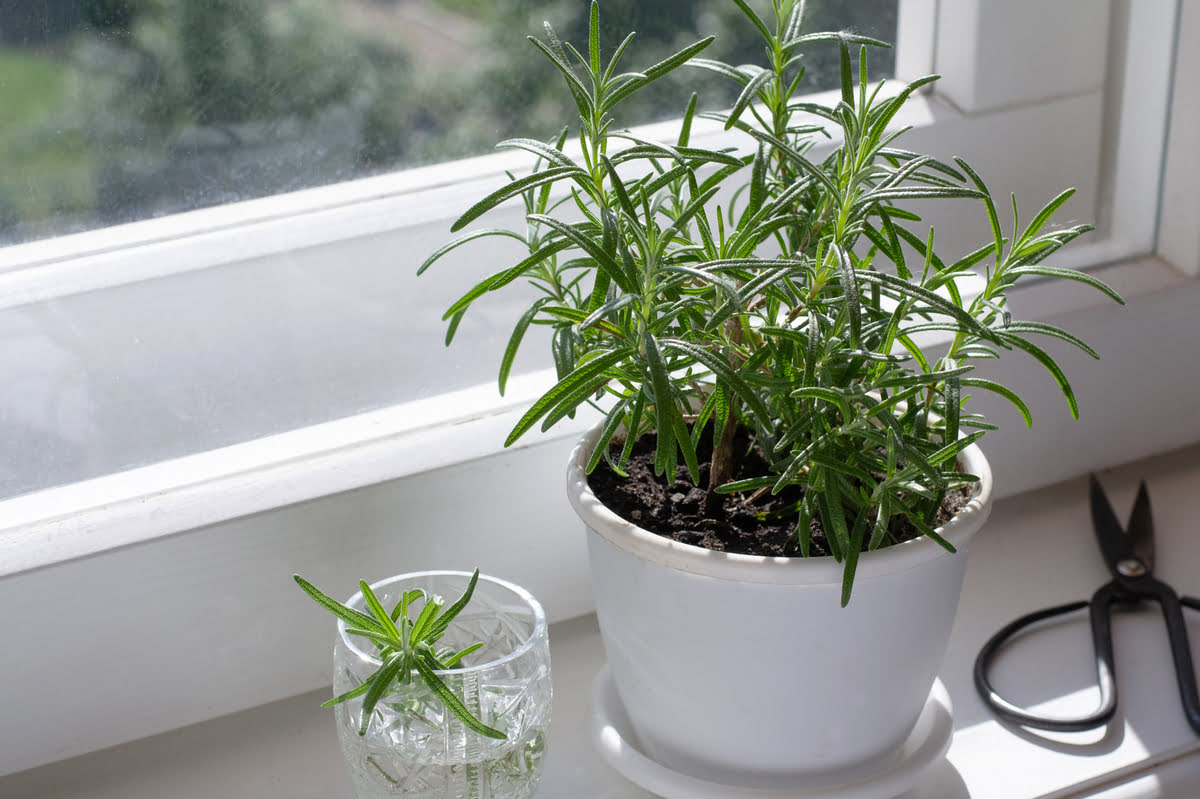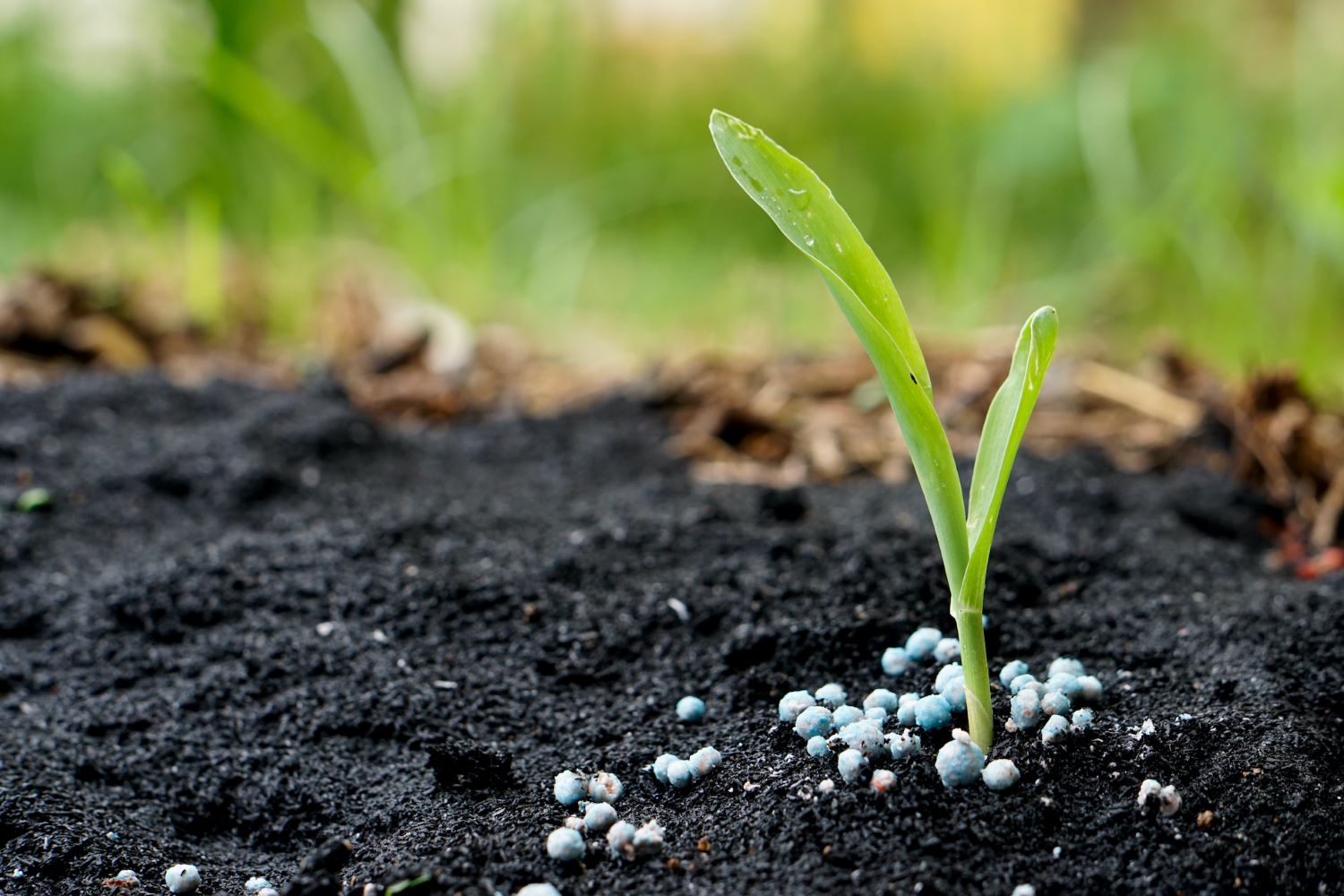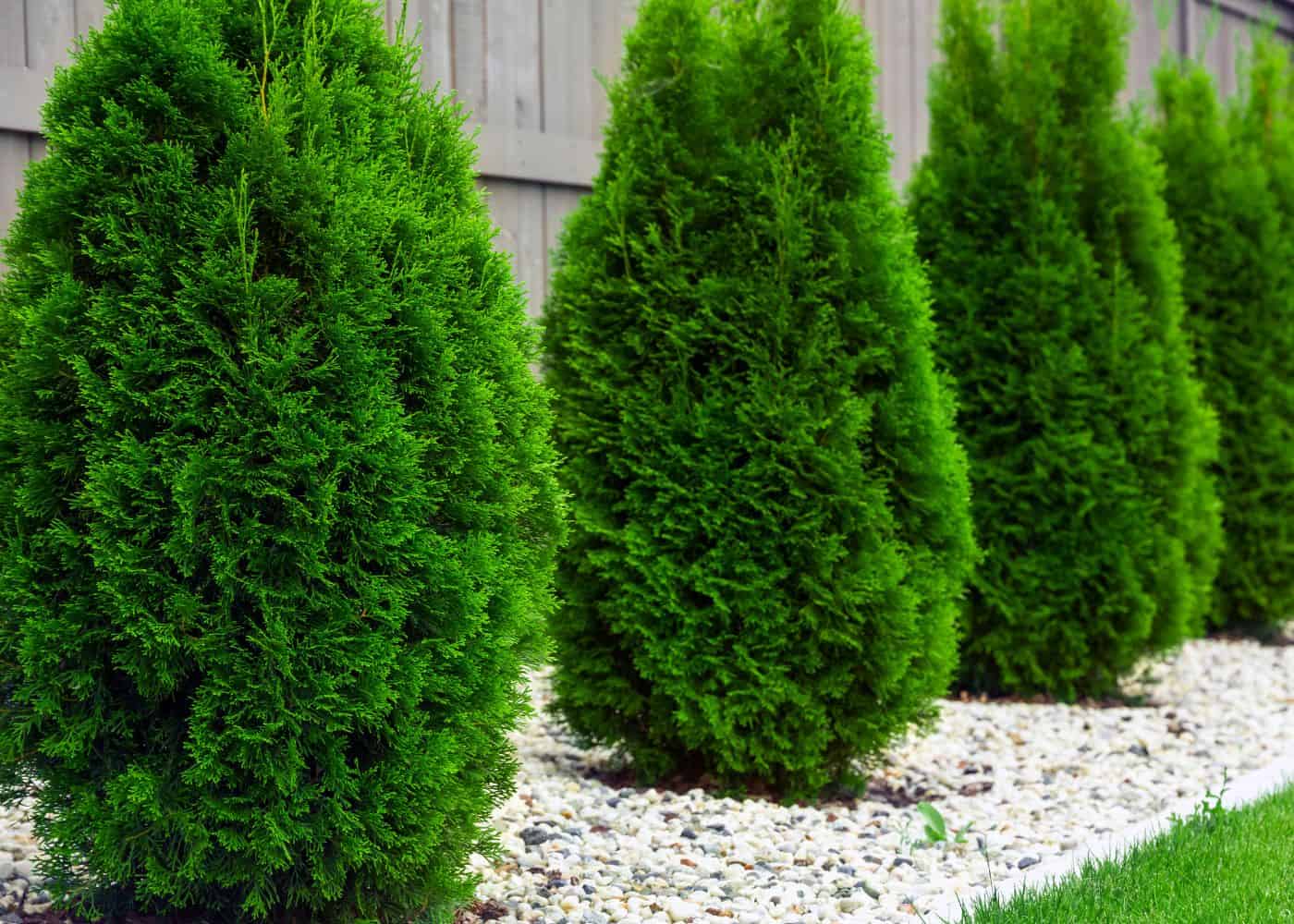Home>Gardening Basics>Getting Started>How Long Does It Take Weed And Feed To Kill Weeds


Getting Started
How Long Does It Take Weed And Feed To Kill Weeds
Modified: January 22, 2024
Discover how long it takes for weed and feed to effectively eliminate weeds from your lawn with our helpful guide. Get started on conquering weeds today!
(Many of the links in this article redirect to a specific reviewed product. Your purchase of these products through affiliate links helps to generate commission for Chicagolandgardening.com, at no extra cost. Learn more)
Table of Contents
Introduction
Welcome to the world of weed control and lawn maintenance! If you’re here, chances are you’re looking for a solution to combat those pesky weeds that have taken over your beautiful lawn. That’s where weed and feed products come into play. In this article, we’ll explore what exactly weed and feed is, how it works, and most importantly, how long it takes for weed and feed to kill weeds.
Having a lush, green lawn is a matter of pride for many homeowners. Unfortunately, unwanted weeds can quickly invade and diminish the overall appearance of your yard. That’s where weed and feed products come in handy, as they offer a convenient two-in-one solution for tackling both the weed problem and promoting the health of your grass.
Weed and feed products are specially formulated combinations of herbicides and fertilizers in a granular form. The herbicides target and eliminate the weeds, while the fertilizer provides essential nutrients to the grass, helping it grow strong and healthy. With proper application and the right conditions, weed and feed can effectively control weed growth and enhance the overall appearance of your lawn.
Now that we know what weed and feed is, let’s delve deeper into how it actually works.
What is Weed and Feed?
Weed and feed is a type of lawn care product that combines herbicides and fertilizers to tackle both weed growth and lawn health in one application. It is designed to be spread evenly across your lawn, delivering a targeted treatment to combat existing weeds and nourish your grass simultaneously.
The herbicides in weed and feed products are selective, meaning they target specific types of weeds while sparing the surrounding grass. This is achieved through the use of different active ingredients that effectively kill target weeds without harming the desirable grass species. This selective approach ensures the weed control process is targeted and minimizes damage to your lawn.
On the other hand, the fertilizer component of weed and feed provides essential nutrients to the grass, promoting healthy growth and overall lawn vigor. These nutrients typically include elements such as nitrogen, phosphorus, and potassium, which are crucial for the development of strong roots, vibrant green leaves, and improved resistance to diseases, pests, and environmental stressors.
Weed and feed products come in granular form, making them easy to apply to your lawn. They can be spread using a broadcast spreader, which allows for even distribution and coverage. However, it’s important to carefully follow the product instructions regarding application rates and timing to ensure optimal results.
It’s worth noting that there are different types of weed and feed products available on the market, each catering to specific lawn care needs. Some formulations may target broadleaf weeds, while others focus on crabgrass or other specific types of weeds. It’s essential to choose the right weed and feed product that addresses the specific types of weeds you’re dealing with in your lawn.
Now that we have a better understanding of what weed and feed is, let’s explore how it actually works to eliminate weeds and promote a healthy lawn.
How Weed and Feed Works
Weed and feed works through the combination of herbicides and fertilizers to effectively control weed growth and promote the health of your lawn. Let’s take a closer look at how these two components work together:
1. Herbicides: The herbicides in weed and feed products are designed to target and eliminate specific types of weeds commonly found in lawns. These herbicides work by disrupting the growth and development of the weeds, eventually leading to their demise. Selective herbicides are used to minimize harm to desirable grass species, allowing your lawn to flourish while targeting the problematic weeds.
2. Fertilizers: Alongside the herbicides, weed and feed products contain fertilizers that provide essential nutrients to the grass. These nutrients, such as nitrogen, phosphorus, and potassium, play a vital role in promoting healthy growth, resulting in a thick, lush, and vibrant lawn. Fertilizers help the grass develop strong roots, withstand stress factors, and resist diseases and pests.
When you apply weed and feed, the granules are spread evenly across the lawn, ensuring thorough coverage. As you water your lawn or wait for rainfall, the granules dissolve, allowing the herbicides and fertilizers to penetrate the soil and reach the weeds and grass roots. The selective herbicides are absorbed by the weeds, blocking their growth processes and ultimately causing them to wither and die. At the same time, the fertilizers are taken up by the grass, providing the essential nutrients needed for optimal growth and vitality.
It’s important to note that weed and feed is most effective when applied during the appropriate season and under the right conditions. Timing is crucial, as it allows the herbicides to target weeds during their active growth phases, ensuring maximum effectiveness. Additionally, applying weed and feed when the grass is actively growing and the soil is moist enhances nutrient absorption and reduces the risk of fertilizer burn. Following the instructions on the product packaging is essential to achieve the best results.
Now that we understand how weed and feed works, let’s explore the various factors that can affect its effectiveness.
Factors Affecting Weed and Feed Effectiveness
While weed and feed products can be an effective solution for controlling weeds and promoting a healthy lawn, there are several factors that can impact their effectiveness. Understanding these factors will help you achieve optimal results when using weed and feed. Let’s explore the key factors:
1. Timing: Timing plays a crucial role in the effectiveness of weed and feed products. Applying the product at the right time ensures that the herbicides target the weeds during their active growth periods, maximizing their impact. Additionally, it’s important to apply weed and feed when the grass is actively growing, typically during the spring and fall months.
2. Weather Conditions: Weather conditions can significantly impact the performance of weed and feed. Ideally, you should apply it on a clear day when there is no rain in the forecast for at least 24 hours. Rain shortly after application can wash away the product, reducing its effectiveness. On the other hand, applying weed and feed during a drought or extremely hot weather may stress the grass, so it’s best to avoid extreme conditions.
3. Lawn Mowing: Proper lawn maintenance, including regular mowing, can enhance the effectiveness of weed and feed. It is recommended to mow your lawn a few days before applying weed and feed to ensure the grass is at an optimal height. Removing excessive growth allows the herbicides to reach the weeds more effectively.
4. Weed Species: Different weed species require different herbicides for effective control. It’s essential to identify the types of weeds in your lawn and choose a weed and feed product that targets those specific weed species. Some products may be better suited for broadleaf weeds, while others are more effective against grassy weeds.
5. Application Technique: The way you apply weed and feed can impact its effectiveness. It’s important to follow the instructions on the product packaging regarding application rates, method, and coverage. Using a broadcast spreader ensures even distribution of the granules, minimizing the risk of under or over-application.
6. Soil Conditions: Soil conditions can affect the absorption and activation of the herbicides and fertilizers in weed and feed products. It’s recommended to lightly water the lawn before applying weed and feed to ensure the product adheres to the soil and reaches the roots effectively.
7. Follow-up Care: To maintain the effectiveness of weed and feed, it’s important to follow up with proper lawn care practices. This includes regular watering, mowing, and fertilizing, as well as monitoring for any new weed growth and promptly addressing it.
By considering these factors and taking appropriate measures, you can maximize the effectiveness of weed and feed in controlling weeds and promoting a healthy, vibrant lawn.
How Long Does it Take for Weed and Feed to Kill Weeds?
One common question when using weed and feed products is how long it takes for them to effectively kill weeds. The answer to this question can vary depending on several factors, including the type of weed, the specific product used, and the environmental conditions. Let’s explore these factors in more detail:
1. Type of Weed: The type of weed being targeted can influence the time it takes for weed and feed to kill weeds. Some weeds are more susceptible to herbicides and may show visible signs of damage within a few days, while others may take longer to exhibit symptoms and eventually die off.
2. Herbicide Formulation: Different weed and feed products contain varying formulations of herbicides, each with different active ingredients and concentrations. These factors can impact the speed and effectiveness of weed control. It’s important to choose a product that targets the specific weed species you are dealing with for optimal results.
3. Environmental Conditions: Environmental factors such as temperature, humidity, and rainfall can affect the performance of weed and feed products. In general, warm and moist conditions promote faster weed growth and herbicide absorption, leading to quicker weed control. Conversely, cooler temperatures or extended dry periods might slow down the weed-killing process.
4. Growth Stage of Weeds: The growth stage of the weeds at the time of application can impact the time it takes for weed and feed to take effect. Weeds in the early growth stages are generally more susceptible to herbicides and may see faster results compared to more established or mature weeds.
In general, it may take anywhere from a few days to a few weeks to begin seeing visible results after applying weed and feed. However, complete weed control can take several weeks or even months, depending on the factors mentioned above. It’s important to be patient and allow sufficient time for the herbicides to do their work.
During this time, it’s possible to see some initial browning or wilting of the weeds, indicating that the herbicides are taking effect. However, for complete eradication, it may be necessary to reapply weed and feed or spot-treat any remaining weeds after the initial application.
To ensure the best results and continued weed control, it’s essential to follow the instructions provided with the specific weed and feed product. This includes adhering to the recommended timing of reapplication and following up with proper lawn care practices, such as regular mowing and watering.
By understanding that the effectiveness of weed and feed takes time and being patient throughout the process, you can successfully combat weeds and achieve a healthy, weed-free lawn.
Tips for Maximizing the Effectiveness of Weed and Feed
When using weed and feed products, there are several tips and strategies you can employ to maximize their effectiveness in controlling weeds and promoting a healthy lawn. Here are some key tips to consider:
1. Choose the Right Product: Select a weed and feed product that targets the specific types of weeds in your lawn. Different products are designed to control different weed species, so it’s essential to choose one that aligns with your needs.
2. Read and Follow Instructions: Carefully read and follow the instructions provided with the weed and feed product. This includes proper application rates, timing, and any specific guidelines for your particular region or grass type.
3. Timing is Key: Apply weed and feed at the appropriate time. Ideally, this is during the active growth phase of weeds and when the grass is actively growing. Timing can vary depending on your location and climate, so be sure to research the best time for application in your area.
4. Prepare the Lawn: Properly prepare your lawn before applying weed and feed. This includes removing any debris, mowing the grass to an appropriate height, and lightly watering it. These steps ensure the product adheres to the soil and reaches the target weeds more effectively.
5. Apply Evenly: Use a broadcast spreader to apply weed and feed granules evenly across your lawn. This ensures consistent coverage and prevents over or under-application in certain areas.
6. Water After Application: Water your lawn lightly after applying weed and feed. This helps the granules dissolve and activates the herbicides and fertilizers, allowing them to penetrate the soil and reach the roots of the weeds and grass.
7. Avoid Mowing Immediately: Refrain from mowing your lawn immediately after applying weed and feed. Give it a few days to allow the product time to work effectively. Mowing too soon may remove the weed-killing herbicides from the leaves of the weeds.
8. Monitor and Spot Treat: Keep an eye on your lawn after applying weed and feed. If any stubborn weeds persist, consider spot treating them with a targeted herbicide. This will provide extra control for problem areas while avoiding unnecessary herbicide use across the entire lawn.
9. Follow Up with Proper Lawn Care: Maintain proper lawn care practices such as regular watering, mowing, and fertilizing. This helps the grass thrive and compete with any potential weed regrowth, enhancing the long-term effectiveness of weed and feed.
By implementing these tips, you can significantly enhance the effectiveness of weed and feed products, leading to a healthier and weed-free lawn.
Precautions and Safety Measures when Using Weed and Feed
While weed and feed products can be effective in controlling weeds and promoting a healthy lawn, it’s essential to take proper precautions to ensure your safety and the well-being of your lawn. Here are some important precautions and safety measures to keep in mind:
1. Read and Follow Instructions: Carefully read and follow the instructions provided with the weed and feed product. This includes guidelines for application rates, timing, and safety precautions specific to the product.
2. Use Personal Protective Equipment (PPE): Wear appropriate personal protective equipment like gloves, long-sleeved shirts, long pants, and closed-toe shoes when applying weed and feed. This will help protect your skin and minimize potential exposure to the herbicides.
3. Keep Children and Pets Away: Ensure that children and pets are kept away from the treated area until the product has been watered in and has dried. This helps prevent accidental ingestion or contact with the chemicals.
4. Prevent Drift and Overspray: Take measures to prevent drift and overspray when applying weed and feed. Avoid applying the product on windy days to minimize the potential for chemicals to drift onto unintended areas or plants.
5. Store Properly: Store weed and feed products in a cool, dry place, away from the reach of children and pets. Follow the storage instructions on the product packaging to ensure the longevity and effectiveness of the product.
6. Dispose of Excess Product Safely: Dispose of any unused weed and feed product properly according to local regulations. Do not pour it down drains, sewers, or storm drains, as it can contaminate water sources.
7. Water in the Product: After applying weed and feed, water your lawn lightly to activate the herbicides and fertilizers. This helps them penetrate the soil and ensures proper absorption by the weeds and grass. Follow the recommended watering instructions provided with the product.
8. Avoid Contact with Treated Area: Avoid walking or playing on the treated area until after the product has been watered in and has dried completely. This minimizes the risk of tracking the chemicals onto unintended areas or exposing yourself to the herbicides.
9. Dispose of Empty Containers Properly: After using weed and feed, dispose of the empty containers following the instructions on the packaging. Some regions may have specific instructions for recycling or proper disposal of pesticide containers.
10. Follow Laws and Regulations: Always adhere to local laws and regulations regarding the use of weed and feed products. These laws may vary depending on your location, so it’s important to research and comply with the regulations specific to your area.
By following these precautions and safety measures, you can ensure a safe and effective application of weed and feed, promoting a healthy lawn while minimizing any potential risks.
Conclusion
Weed and feed products offer a convenient and effective solution for controlling weeds and promoting a lush and healthy lawn. By combining herbicides and fertilizers, these products target unwanted weeds while nourishing the grass, resulting in a beautiful and weed-free yard.
Throughout this article, we’ve discussed what weed and feed is and how it works to eliminate weeds and promote lawn health. We’ve also explored the factors that can affect its effectiveness, such as timing, weather conditions, and the growth stage of weeds. Additionally, we provided tips for maximizing the effectiveness of weed and feed and outlined important precautions and safety measures to consider during the application process.
Remember, achieving a weed-free lawn takes time and patience. Results may not be immediate, and some weeds may require additional treatments. It’s crucial to follow the instructions on the product packaging and maintain proper lawn care practices to ensure long-term weed control and a healthy, vibrant lawn.
As you embark on your weed control journey, stay informed and adapt your approach to the unique needs of your lawn. Regular monitoring, timely applications, and maintenance will help you keep your lawn in top shape and prevent weed growth from becoming a persistent issue.
Now armed with knowledge about weed and feed, you can confidently take the necessary steps to achieve a weed-free lawn and enjoy the beauty and tranquility of a well-maintained outdoor space.





